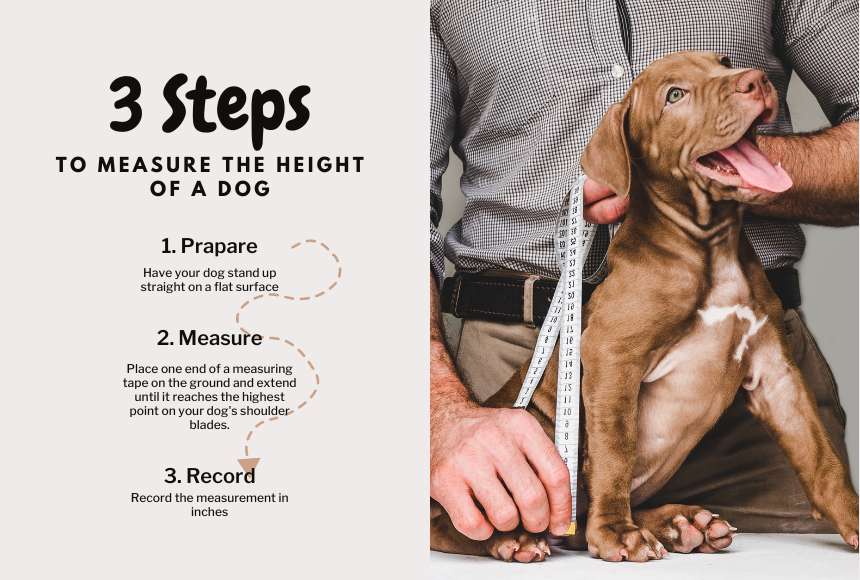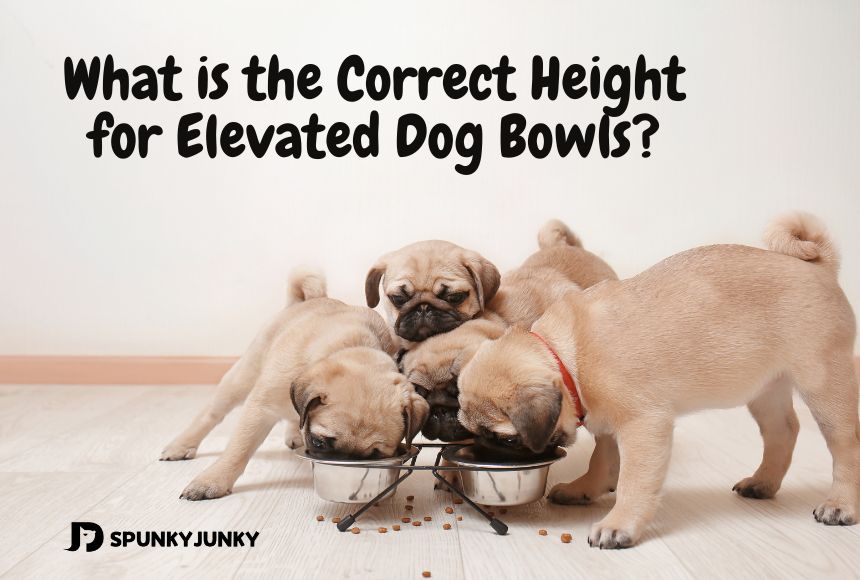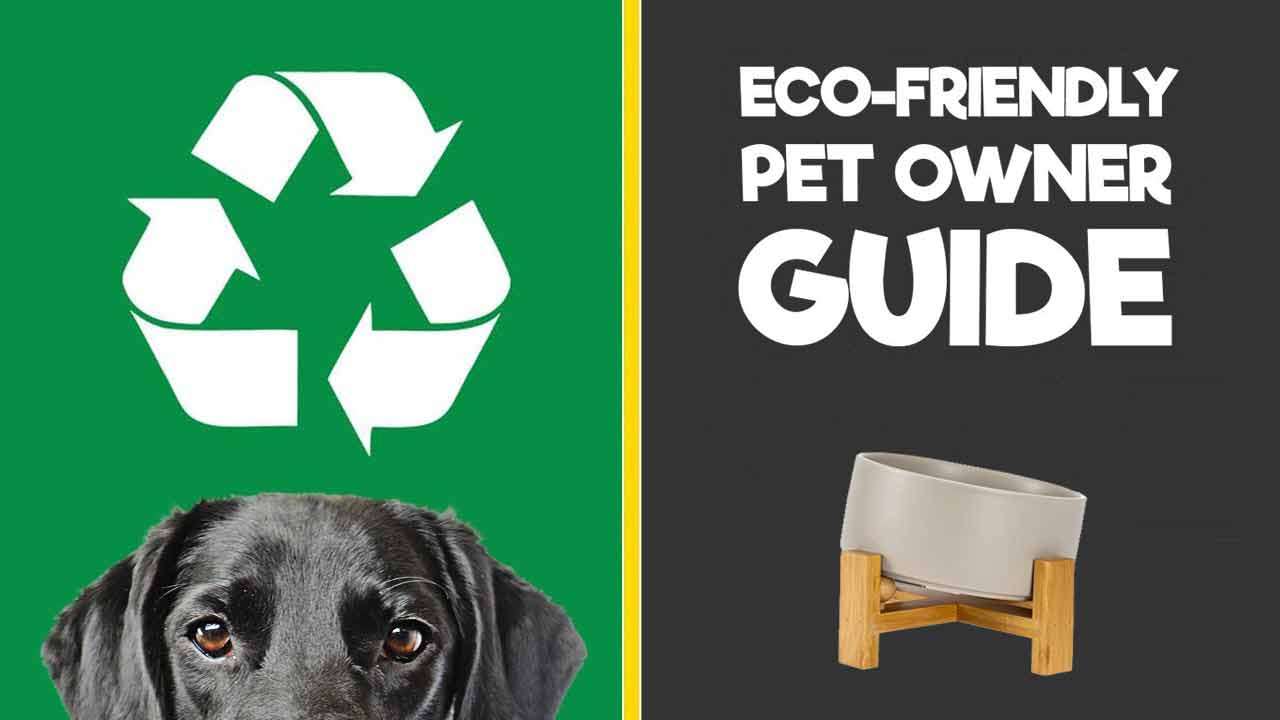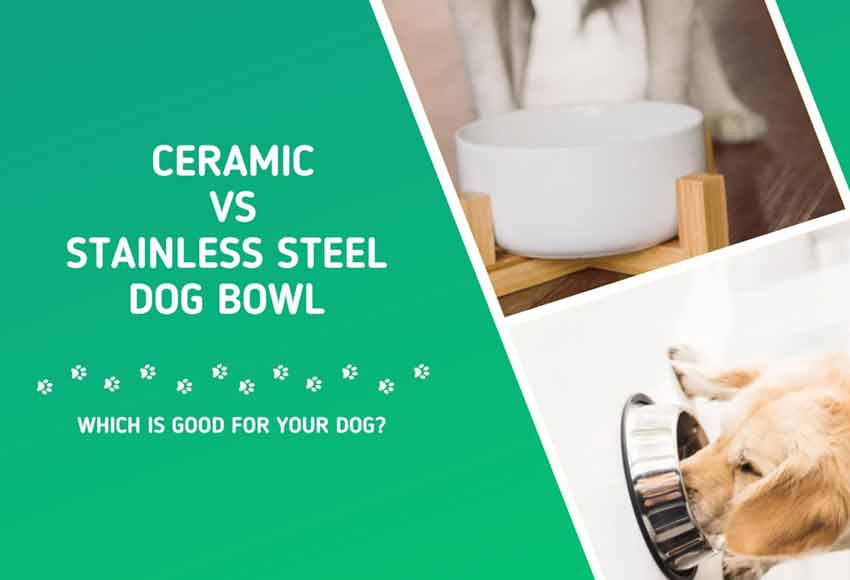My Doberman, Turbo, has poor digestion. I was worried and didn't know the reason.
So I took him to the hospital. When the doctor found out that Turbo had a brother, Charlie the Schnauzer, he asked me a question:
How did you feed the dog?
I answered the doctor's question while seeing his surprised expression.
Then I heard the second question: "Turbo and Charlie eat out of the same bowl? But they are totally different heights! "
The doctor told me a lot about the pet's correct eating posture. In the end, he suggested I replace the elevated bowl for Turbo.
I did.
And Turbo is much better now.
This short story about Turbo gives me the opportunity to share something today. Many pet parents are still determining if their baby needs a raised bowl and what height to get.
Don't worry. I'm going to share my experience with you.
Does My Dog Need an Elevated Dog Bowl?
Even though not all dogs need raised dog bowls, there are a few good reasons why some dogs should have them:

How Heigh Should Dog Bowl Be?
In general, the dog bowl stand height should be lower than the dog's lowest chest. We'd like to recommend measuring the dog's wither height first. The raised dog bowls should be 4" to 6" (4" for small dogs) below the wither height. But most bowl stands on the market are not made to order, so we have come up with a set of suggested figures based on this rule:
2. For middle dogs with a wither height of 12"-15": an elevated bowl with a height of 8 inches is usually appropriate. This height can help prevent strain on their necks and backs while allowing them to eat comfortably.
3. For large dogs with a wither height of 16"-19": an elevated bowl with a height of 12 inches is typically recommended. This height can help prevent them from leaning too far to reach their food, leading to discomfort and strain on their muscles and joints.
4. For dogs with a wither height over 19": an elevated bowl with a height of 16 or over 16 inches is the best.

How to Measure Height of A Dog?
As I already said, you need to measure the dog's wither height first. The highest spot of your dog's shoulder blades is the top point of wither height. Here is how to measure height of a dog:
Step 2: Place one end of a measuring tape on the ground and extend until it reaches the highest point on your dog's shoulder blades.
Step 3: Record the measurement in inches.
Once you know your dogs' height, you can choose an elevated dog bowl that is the right height for them. Generally speaking, the top of the bowl should be level with your dog's chest or at a height where they can eat without having to stretch or strain their neck or back.
Extra Factors for Choosing a Suitable Bowl
When selecting an elevated bowl for your dog, there are a few factors to consider, such as the material and style of the bowl. Here are some tips to help you choose the right one:
● Style: Don't wonder why I recommend you consider the style of the bowl. For example, if your dog is constantly gobbling and dislikes chewing, you should prepare a slow-feed dog bowl.
When selecting an elevated bowl for your dog, consider their needs, such as size and health conditions. Choose a bowl that's the appropriate height, material, and style to help your dog eat comfortably and safely.
Are Raised Dog Bowls Dangerous?
People have said that elevated dog bowls may increase the risk of bloating, but there is no solid evidence to back this up. GDV is a complicated problem, and no one knows for sure what causes bloat, but it can be treated and cared for well.
It's worth noting that a study published in 2000 explored the potential link between raised bowls and bloat. The study identified non-dietary risk factors for GDV, including age, relatives, fast eating, and raised bowls. Giant breeds that did not use a raised bowl had fewer bloat cases than those who did. It's interesting to note that this statistic challenged many vet recommendations for giant breeds at the time.
Even though there are some questions about the study's results, you should still talk to your vet about the possible health benefits of elevated dog bowls.
A Tip of Using Raised Dog Bowls:
As we talked about the potential risks of using raised dog bowl, you will be hesitant to choose one. Don't worry, we have a small tip for you: use a slow feeder dog bowl with the suitable stand.
Slow feeders can control your dog's eating speed and reduce the amount of air it inhales while eating. Also, a stand with right height can help keeping a comfortable eating posture.
An Exact Benefit of Using Raised Dog Bowls
Even though we talked a lot about how high elevated dog bowl should be, you may still not know if you should use one for your pups. When you give your a raised dog bowl, there is a specific benefit in one case: the dog has megaesophagus.
Umm...what is megaesophagus?
Megaesophagus is a disease in which the esophagus, the muscular tube that moves food from the mouth to the stomach, loses its ability to move food into the stomach properly. This makes it hard to swallow and often causes food to get stuck in the stomach.
Why am I so certain that using a raised bowl is good for dogs with megaesophagus? Here are the reasons:
1. Upright feeding position: By elevating the food bowl to a suitable height, dogs with megaesophagus can eat in a more upright position. This helps the food move down the throat and into the stomach with the help of gravity, which makes it less likely that food will get stuck.
2. Reduced regurgitation: One sign of megaesophagus is regurgitation, which is when food or fluids that hasn't been digested comes back up through the esophagus and out of the mouth. Feeding from a higher bowl can reduce the amount of food that comes back up by making the flow of food more controlled and downward.
3. Improved digestion: When food stays in the esophagus because of megaesophagus, it can cause an overgrowth of germs, pain, and poor digestion. Raised dog bowls can help food get to the stomach faster, which can help the dog digest and absorb nutrients better.
4. Aspiration prevention: Dogs with megaesophagus are more likely to breathe food or liquid into their lungs, which can cause infections in their lungs. Aspiration is less likely when a person eats from an elevated bowl because the food moves more slowly down the throat and into the stomach.
But please keep in mind that megaesophagus can only be treated with a full treatment plan from a doctor. In addition to using higher dog bowls, you may also need to give your dog smaller meals more often, feed it a special diet, or give it medicine. Dogs with megaesophagus need to go to the vet often and be closely watched to make sure their general health and well-being.
Additional Information You May Want to Know:
Final Words
Now that you know the pros and cons of elevated dog bowls, you should talk to your vet about them and consider their advice before setting up an raised dog bowl. I'm sure all of your babies will be as healthy as Turbo.






